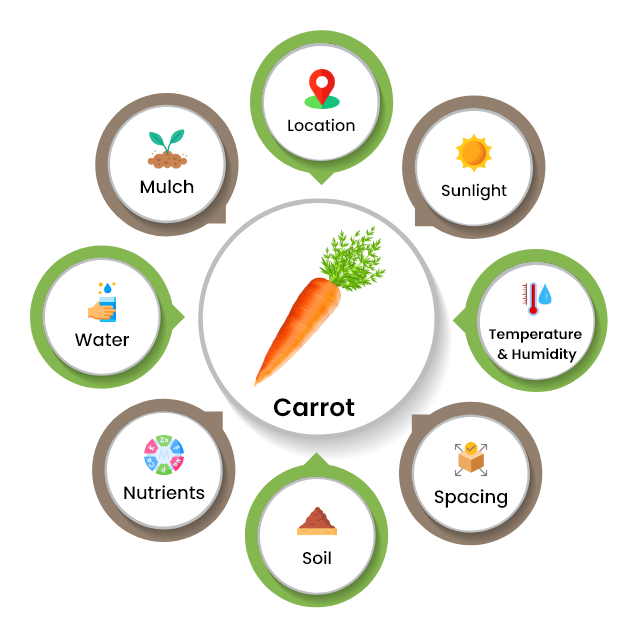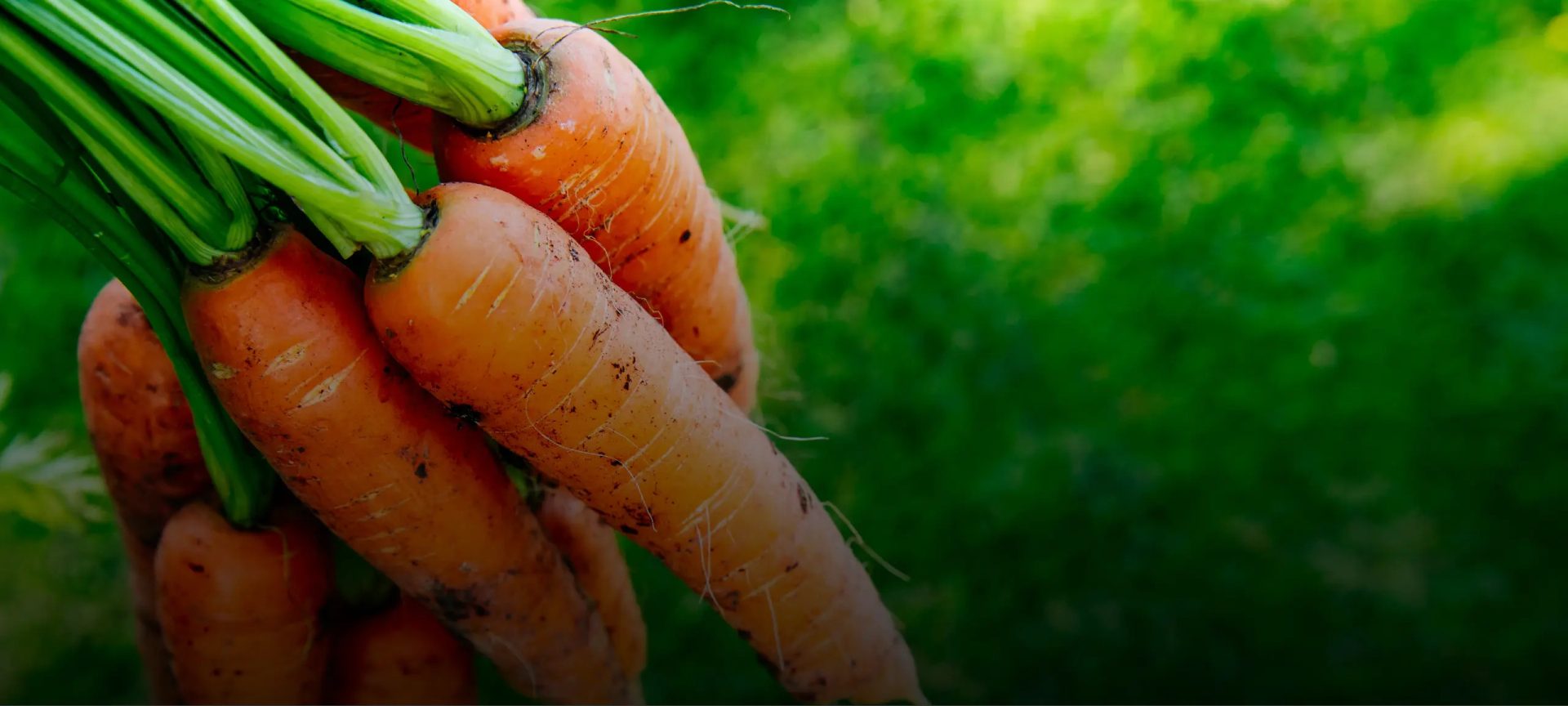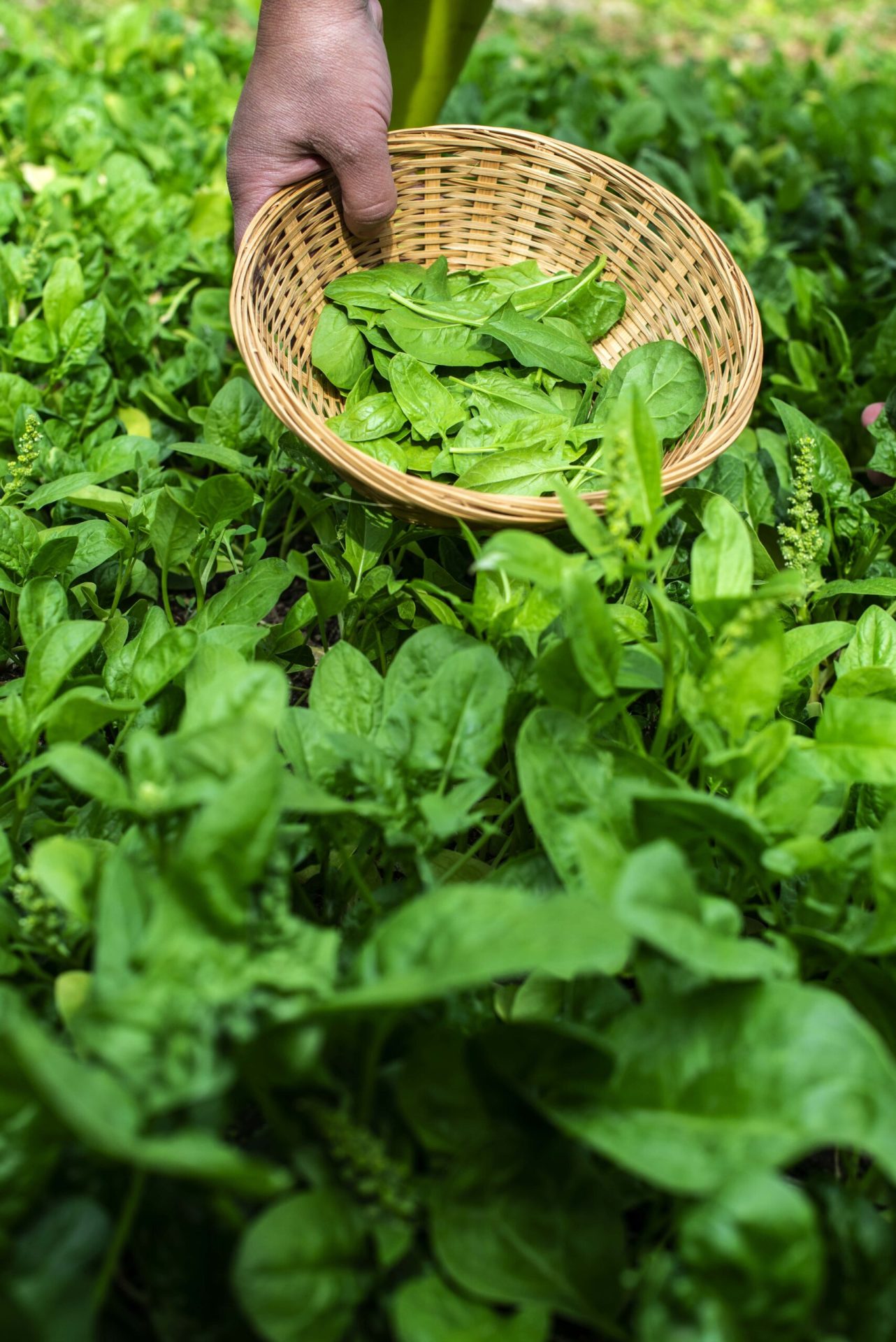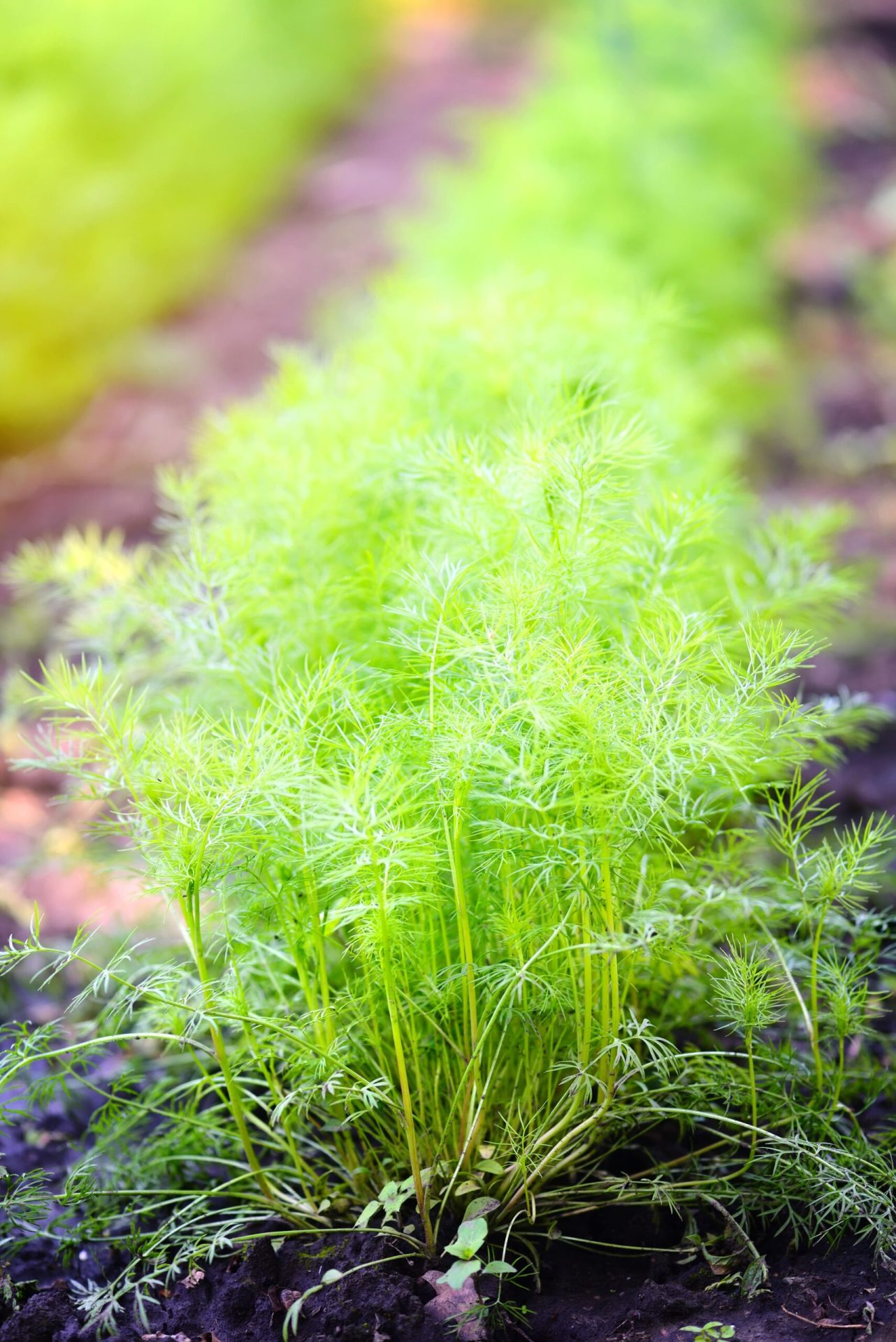Want to grow juicy, crunchy carrots in your home garden? Carrots can be a finicky vegetable to grow, especially if you want to grow long, straight carrots. They require loose soil, prefer rich soil (but not too rich), and have low germination rates.
However, the are some tricks to growing carrots successfully. This carrot growing guide covers all that and more. Keep reading to learn how carrots grow, essential techniques, and carrot growing stages.
Growing Carrots 101: Step-by-Step Guide

1. Location
Select a location that receives 6-8 hours of sunlight per day. Even though carrots can tolerate partial shade, they prefer bright direct sunlight.
2. Temperature and Humidity
An ideal growing temperature for carrots is 40-80°F. The humidity level should be about 60-70% during germination and early growth.
3. Spacing
Thin seedlings to about 4-5 inches apart in each row and keep rows 12-18 inches apart.
4. Soil
Well-draining, sandy-loamy soil, which is loose, fluffy in texture, and has a pH of 6.0-7.0 is ideal for growing carrots. A loose mix will help your carrots grow straight.
5. Nutrients
Mix a bit of bonemeal into the soil for root development. Fertilize carrots every 5-6 weeks throughout the growing season with a low-nitrogen fertilizer.
6. Water
Provide carrots with one inch of water every week. Regularly water carrots during the germination process.
7. Mulch
Use organic mulch like sawdust, straw, pine needles, leaf mold, manure, and compost.
How to Grow Carrots from Seed?
Carrots are best sown directly into the garden.
- Water the soil deeply after planting seeds to keep it moist.
- Plant seeds about 3-5 weeks before the last frost date in the spring.
- Plant them about ¼ inch deep, 1-2 inches apart.
- Apply manure after planting seeds.
- Keep the top inches of the soil moist when the seeds are germinating.
- Thin seedlings to about 4 to 5 inches apart as they grow.
How to Grow Carrots in Containers?
Growing carrots in containers is a fun way to cultivate this vegetable, even in small spaces and on decks, patios, and balconies.
- Fill the container with one-third organic compost and two-thirds potting soil.
- Sow carrot seeds about ¼ inch deep in the soil.
- Space seeds about ½ inch apart seeding across the soil surface.
- Move the soil to an outdoor location with at least 6 hours of sunlight.
- Keep the soil moist throughout the growing process.
- Sprouts appear 1-3 weeks after sowing seeds.
- Use organic liquid fertilizer every 4 weeks.
- When the seeds sprout and seedlings reach two inches in height, you can thin them.
- Carrots are ready for harvesting between two and three months after sowing.
How to Transplant Carrot Seedlings?
Carrots don’t generally like when their roots are disturbed, and typically do not take well to transplanting. However, if you follow a very careful process, you can transplant carrots, once they reach about one-inch tall.
Follow the below steps to transplant seedlings:
- Gently lift seedlings from the container by leaves; never do it by roots to avoid damage.
- Create a hole in the soil twice as wide and deep as the carrot’s root ball.
- Before transplanting seedlings, loosen the soil around holes.
- Orient the seedling so the crown where the leaf meets the stem is at the soil level.
- Plant roots into the soil and refill it with loosened soil, making it firm gently around the base.
- Space seedlings about 4-6 inches in soil rows, blocks, or broadcasts, based on the final intended spacing when fully grown.
- Water seedlings immediately after replanting to settle the soil.
- Monitor seedlings and soil daily after a few weeks until established to avoid wilting or stress issues.
When to Plant Carrots?
Plant carrots in the spring and fall, as it’s too hot to sow carrots in the summer. Plant them 10-12 weeks before the first frost for a fall crop.
- Sow carrot seeds 2-3 weeks before the last spring frost date.
- Ensure the soil has dried out and warmed up a little after the winter.
- Seeds germinate when the soil temperature is about 40°F and grow best at temperatures of 55-65°F.
- High summer temperature reduces growth, decreases quality, and causes bitter or off-flavors to develop.
- For a fall harvest, sow seeds in mid-to-late summer, starting about 10 weeks before the first fall frost.
How to Plant Carrots?
To plant carrots, follow these steps:
- Prepare the location by tilling it to a depth of 10 inches.
- Mix in compost and 6 inches of sandy topsoil if it’s not loose
- Sow seeds directly in the garden instead of transplanting them.
- Sow seeds about ¼ inch, 2 to 3 inches apart with 1 foot of spacing between rows.
- Keep the soil moist with frequent watering (shallow).
- Carrots require 14-21 days to germinate (or a bit longer), so don’t panic if carrots don’t appear quickly.
- For a continued harvest, plant carrots every four weeks through early-summer.
Carrots Growing Stages

1. Seed Stage
Planting carrot seeds shallowly near the surface, because they require light exposure for germination. The carrot seeds absorb water and begin to swell. This triggers the seed germination process, which produces tiny roots called radicles. Once established, the seedling will grow a stem and develop leaves.
The carrot seedlings will grow and mature, producing a tapered root of a mature carrot plant. With proper care, the plant will grow strong and healthy during this stage, preparing itself for the next stage.
2. Sprout Stage
Small shoots emerge from the soil and continue to grow upwards, elongating into a stem. Cotyledons start to develop and provide the seedling with nutrients until it produces its food through photosynthesis.
The young carrot plant is fragile and susceptible to damage from pests and environmental stressors. For successful growth, keep the surroundings weed-free and check for pest infestation.
Keep the soil moist consistently, not waterlogged. It develops a more robust root system and produces additional leaves in its next leaf growth cycle.
3. Leaf Growth Stage
The carrot plant develops a solid root system and produces healthy leaves. The plant’s leaves will grow larger and more complex at this stage. The older leaves at the plant’s base will be large and robust. Provide the carrot plant with sufficient nutrients and water for successful leaf growth.
Monitor the plant to check for any signs of pests and disease. Regular inspection and treatment help prevent pest infestations and keep the plant healthy. The plant actively produces a robust and healthy set of carrots that people can harvest when fully matured.
4. Root Growth Stage
The plant produces edible root vegetables. The plant’s energy focuses on root growth and will develop until maturity.
Keep the soil moist to promote growth. The root system is sensitive to dry soil, and prolonged periods of drought cause the root to become malformed or stunted.
As the root grows, it develops its characteristic long, tapered shape. The root continues to grow until maturity, which occurs around 70-80 days after planting. The shape and size of the carrot varies depending on its variety and growing conditions.
5. Maturity Stage
The carrot plant fully grows leaves and a long, tapered root. The size of the carrot will vary based on its variety. It reaches a length of about 6-8 inches and a width of 1-2 inches.
How to Harvest Carrots?
Follow the below steps for a successful harvest:
- Grabbing the foliage and pulling it results in a handful of leaves with no carrots attached to it.
- Dig carefully around the roots or lever up using a garden fork and remove it from the soil.
- Cut off the green tops ½ to ¼ inch from the top portion of the carrot, rinse, and dry the roots before storage.
- When harvesting, consider how much you can use in 2-4 weeks.
- Leave carrots in the ground for four weeks or even longer in winter.
- Harvest the last of the carrots before the ground freezes.
How to Store Carrots?
When you decide to harvest carrots, you need to have a storage plan in mind to store them for a long time. They can last up to two to three months in the refrigerator when stored properly.
Follow below steps to keep raw carrots fresh and crunchy for a month:
- Wash carrots only when you plan to use them
- Leave about 1 inch of stems at the tops of your roots.
- Wrap raw carrots in a paper towel and store them in an airtight container.
- Keep this container in the crisper drawer of your fridge to keep it fresh for several weeks.
- Freeze carrots or pack them in moist sand in a root cellar for long-term storage.
- Store carrots away from fruits that emit ethylene gas.
Best Carrot Varieties
Carrot varieties come in different types, vary in size and shape. It has various hues, from classic deep orange, red, purple, and white to yellow.
1. Deep Purple Hybrid Carrot
These deep purple carrots make an irresistible ornamental display of color in snacks, salads, or dips. Highly recommended variety which can be consumed raw as the color of this variety fades when you cook it. It grows to 7-8 inches when matured and has tall fronds of about 24 inches. It’s ready for harvesting in 75-80 days.
2. Solar Yellow Carrot
These bright yellow carrots are an ancient heirloom and prove the best example of why some heirlooms stand the test of time. This crunchy, juicy, and sweet carrot variety is worth growing. Narrow, pale carrot roots max at about 7 inches in length. Ready for harvest in about 60 days after they germinate.
3. Tendersweet Carrot
This heirloom carrot variety dates back to the 1930s, as it is both sweet and tender. A coreless type, which makes it an ideal contender for preserving and juicing. A perfect carrot variety for people who love to stock up on vegetables for canning and enjoy them throughout the year. Its carrot seeds produce tapered 7-inch roots in 75 days. It thrives in full sun in Zone 3-9, and grows best in sandy, well-draining soil.
Common Pests and Diseases Problems
Common pest problems with carrots are carrot flies, aphids, wireworms, carrot weevils, slugs, and snails. Diseases that might affect carrots produce are carrot rust fly, powdery mildew, alternia leaf blight, and bacterial soft rot.
To avoid pests and diseases, follow crop rotation, proper spacing, and timely watering to reduce their occurrence. Monitor crops regularly to keep pests and disease problems under control.
Companion Plants for Carrots

Companion plants help with pests, nutrients, insects, and root development. When choosing these plants, consider the growth habits, spacing requirements, and compatibility.
Carrots can grow alongside different vegetables and herbs like lettuce, chives, onions, beans, peas, radishes, cabbage, tomato, beets, spinach, garlic, dill, basil, and nasturtium.





